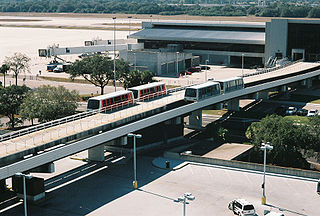Here in America, our building style has old-world influences. There is direct evidence of this. Make no mistake. It’s understandable considering that Europe and Asia are where our ancestors were before emigrating – Europeans to the east and Asians to the west. Our ancestral roots and backgrounds definitely came into play here. Think Victorian, Renaissance, Romanesque and gothic, to name a few.
Now flash forward some 170 years to the period just after the conclusion of the Second World War when the development scheme that was adopted and was commonly practiced throughout the land, is and has been for some time now showing signs of stress.
The Center for Clean Air Policy, meanwhile, in its “CCAP Transportation Emissions Guidebook, Part 1: Land-use, Transit & Travel Demand Management,” on page 7, I believe, sums it best:
“Patterns of urban growth of Post WWII North American development have created cities and regions that are centered upon and are dependent on the car to meet transportation needs. Located largely at the urban fringe, this pattern of suburban, or greenfield, development is typically dominated by housing-only enclaves consisting of single family homes and two-car garages and a hierarchical road system (with one way in and one way out). Here, land use functions are isolated (residential, commercial, employment), origins and destinations are farther apart, infrastructure design is oriented toward the automobile, and low population densities are not conducive to public transportation. With the automobile as the only realistic transportation mode for suburbanites in these sprawling communities, commuters are faced with increased driving distances and increased congestion. All told, this pattern of growth has resulted in deteriorating urban air quality and human health, increased emissions of greenhouse gases, limited transportation and housing choice, inefficient use of infrastructure, and communities that are less able to meet the needs of their residents.”
And, with rare exception, that is pretty much where the situation rests today.
A new dynamic, new paradigm needed
So, understanding the situation, where to go from here is the question.
What with climate change and global warming causing a whole host of negative environmental and atmospheric impacts forced individual and community relocations being one among them, history now shows and teaches us what works and what doesn’t, and what can be applied building and development-wise in zones prone to flooding and the effects of rising seas.
But it isn’t just that. Experts have been telling us for years that cities will be home to two-thirds to eight-tenths of the population by 2050. That’s really taking it on. So knowing what we’re potentially facing what with possible forced relocations of low-lying communities and all, is it not better to have a mitigating or relocating plan already in place ahead of time? Like having evacuation plans in place to more effectively respond to natural disasters? I, for one, think so.
The way I see it this isn’t complicated, or it shouldn’t be.
One community which has been in the spotlight in the recent past in Florida’s southwest is Babcock Ranch.
Babcock Ranch should serve as the quintessential example for how to do cities or communities right. This masterplanned community which, as it turns out, emerged from 2022’s category four Hurricane Ian when it made landfall, virtually unscathed and suffering very little damage, comparatively speaking. BR is pretty much energy self-sufficient or self-sustaining, the community possessing its own solar power, power supply, both in rooftop and ground-based configuration, although it is not completely isolated from the grid utility supply.
Moreover, the land the community is built upon is elevated thanks to fill dirt being brought in and sits at an elevation of 30 feet or so above sea level. This was done specifically for the purpose of guarding against sea-level rise. What’s more the community has no shortage of open space, housing, greenways and public space upon which the public can congregate.
Add to this, the town is served or accessed by cars and trucks with provisions, of course, for bicycling. And, the model upon which Babcock Ranch is based, I would presume, could be easily replicated elsewhere.
The point is cities do not have to follow the existing, standard mold, nor do they need to become supersized or unwieldy. Built or built up adhering to a paradigm that has as one of its attributes, efficiency, and sustainability being another and environmental friendliness as yet another characteristic, the cities and communities, again, to repeat myself, do not need to follow the standard, existing blueprint.
They can indeed be innovative, smart, meet all of their citizens’ needs and meet them handily while being free of environmental harms like dirt that is often found in the air in others, the kind of poor air quality that residents there find themselves forced to breathe regularly.
Home-page image (Tampa Int’l. Airport automated people mover) used with this article, copyrighted by James G. Howes, 2009 (used with permission).
– Alan Kandel
Copyrighted material.
This post was last updated on Nov. 29, 2022 at 6:31 a.m. Pacific Standard Time.
